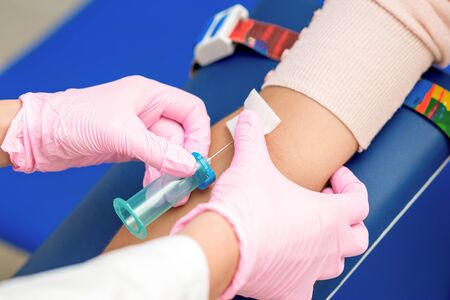Understanding Tattoo Removal in the UK
In the UK, tattoo removal has become increasingly sophisticated, with clinics now offering a variety of safe and effective methods to help individuals erase unwanted ink. The most common technique you’ll encounter is laser tattoo removal, particularly Q-switched and picosecond lasers, which work by breaking down ink particles so your body can naturally eliminate them over time. Other options, such as surgical excision or dermabrasion, are generally reserved for specific cases or very small tattoos. Whichever method you choose, it’s important to have realistic expectations: multiple sessions are usually required, and results depend on factors like ink colour, skin type, and the age of the tattoo. UK clinics adhere to strict protocols to ensure patient safety and comfort throughout the process, making professional consultation essential before starting your journey. By understanding these options and what each entails, you’re already taking a positive step towards achieving clear, healthy skin while minimising potential side-effects.
Immediate Aftercare Steps Post-Procedure
After your tattoo removal session at a UK clinic, the right aftercare is crucial for minimising side-effects and ensuring your skin heals smoothly. The first 24 to 48 hours are especially important. Here are the essential guidelines every UK patient should follow straight after their procedure:
Key Immediate Actions
| Step | Details |
|---|---|
| Keep the Area Clean and Dry | Gently clean the treated area with cool water and mild, fragrance-free soap. Pat dry—do not rub. |
| Apply a Sterile Dressing | Your practitioner will likely cover the area with a sterile, non-stick dressing. Change this as advised, usually once daily or if it becomes wet or dirty. |
| Avoid Touching or Picking | Resist any urge to touch, scratch, or pick at scabs or blisters to reduce infection risk and prevent scarring. |
| Use Recommended Ointments | If your clinician provides an ointment (such as petroleum jelly), apply as directed to keep the area moist and promote healing. |
| Manage Discomfort Sensibly | If you experience mild discomfort, use paracetamol instead of ibuprofen or aspirin, which can increase bleeding risk. |
Special Considerations for UK Patients
- Dress for the Weather: The British climate can be unpredictable; ensure the treated area is covered but not overheated or overly exposed to rain.
- Public Transport Precautions: If travelling home via tube or bus, avoid brushing the treated skin against surfaces and keep it protected from potential contaminants.
- Avoid Alcohol: Skip celebratory drinks post-procedure as alcohol can slow down healing and increase swelling.
Your Comfort Matters
If in doubt about any reaction or sensation, always contact your clinic for reassurance. Prompt aftercare not only reduces side-effects but also empowers you on your tattoo removal journey—giving you confidence in both your healing process and your decision.

3. Managing Redness, Swelling and Blistering
After laser tattoo removal, it’s entirely normal to experience some redness, swelling, and even occasional blistering. These are typical side effects and usually subside within a few days, but handling them correctly is crucial for a smooth recovery. Here in the UK, clinics recommend an approach rooted in gentle care and tried-and-tested local products.
Redness Relief
To minimise redness, gently cool the area with a clean, cold compress for 10-15 minutes at a time. Avoid ice packs directly on the skin; instead, wrap them in a clean cloth. Pharmacists across the UK often recommend fragrance-free moisturisers such as E45 Cream or Aveeno Lotion—both widely available at Boots and Superdrug—to help soothe irritation without clogging pores.
Tackling Swelling
Swelling can be managed by elevating the treated area whenever possible, especially in the first 48 hours. Over-the-counter anti-inflammatory medication like paracetamol (as advised by your GP or pharmacist) can offer relief, but always avoid aspirin as it may increase bruising. Gentle compression with a sterile bandage can also support the area if recommended by your clinic.
Caring for Blisters
Blisters may form as part of the healing process—do not be alarmed. The key is to resist the urge to pop or pick them. Keep blisters clean and covered with a non-stick dressing such as Mepore or Melolin pads, both of which are standard issue in UK aftercare kits. If any blister bursts naturally, cleanse gently with lukewarm water and apply a thin layer of antiseptic cream like Savlon or Sudocrem.
Local Tips from UK Experts
British dermatologists advise keeping the treated area out of direct sunlight and using a high SPF sunblock (SPF 50+) once healing allows. Also, avoid swimming pools, saunas and strenuous exercise until all redness and swelling have subsided to prevent infection. Remember: patience and consistent care pay off, supporting your skin’s natural healing abilities with locally trusted products ensures you’re giving yourself the best chance at minimising side-effects.
4. Long-Term Care: Preventing Scarring and Pigmentation Changes
After your tattoo removal sessions, your skin’s long-term recovery is just as important as the immediate aftercare. In the UK, where the weather can be unpredictable and our skin faces various environmental factors, taking proactive measures will help you avoid unwanted side-effects such as scarring and changes in pigmentation. Here are some expert-backed recommendations tailored for UK patients:
Consistent Moisturising
Keeping the treated area well-hydrated supports the natural healing process and helps maintain your skin barrier. Choose a fragrance-free, hypoallergenic moisturiser recommended by your clinic. Apply gently twice daily, even after the initial redness and swelling have subsided.
Sun Protection Is Essential
The British climate may not always be sunny, but UV exposure remains a significant risk for pigmentation changes post-removal. Use a broad-spectrum SPF 50 sunscreen on exposed areas year-round, and reapply if you are outdoors for extended periods. Wide-brimmed hats or protective clothing can provide additional coverage.
Recommended Sun Protection Practices
| Situation | Protection Tip |
|---|---|
| Cloudy Days | Apply SPF 50 – UV rays penetrate clouds |
| Sunny Days | Add physical barriers (hat, sleeves) plus SPF 50 |
| Indoors near windows | Sunscreen still needed if skin is exposed to daylight |
Monitor Your Skins Progress
Check the treated area regularly for any signs of abnormal healing, such as persistent redness, raised scars (keloids), or dark/light spots (hyperpigmentation or hypopigmentation). Early detection allows you to seek professional advice promptly and adjust your care routine as needed.
Avoid Picking or Scratching
If scabs or flakes develop, resist the urge to pick at them. Allowing your skin to heal naturally reduces the risk of permanent scarring and uneven texture.
Your Clinic’s Role in Aftercare
Your UK clinic should offer follow-up appointments and personalised guidance tailored to your skin type and the specifics of your treatment. Don’t hesitate to reach out with concerns or questions—open communication ensures that minor issues don’t become major setbacks.
By embracing these proactive steps, you’re investing in smooth, healthy skin—giving yourself every chance to enjoy excellent results from your tattoo removal journey.
5. What to Avoid for Quick Healing
After your tattoo removal session at a UK clinic, its tempting to carry on as usual, but certain habits can delay your recovery or heighten side effects. Let’s highlight the most common pitfalls, tailored specifically to the British lifestyle and healthcare context.
Sun Exposure and Tanning Beds
While the UK weather isn’t always sunny, don’t underestimate the damage even mild sunlight can cause to healing skin. Avoid direct sun exposure, and definitely steer clear of tanning beds. If you must go outside, cover the area with clothing rather than relying solely on sunscreen, as this offers more robust protection for sensitive skin post-laser.
Swimming Pools and Saunas
The urge to relax in a pool or sauna—especially when holidaying or visiting a leisure centre—is strong, but these environments harbour bacteria and chemicals that could irritate or infect your skin. NHS guidance recommends keeping treated areas dry and clean until fully healed; so skip the swim and sauna for now.
Avoid Picking or Scratching
It’s natural for the treated area to itch as it heals, but picking at scabs or scratching can lead to scarring or infection. Trust the process—let your skin heal undisturbed for best results.
Minimise Alcohol and Smoking
Both alcohol and smoking can slow down your body’s natural healing abilities. In the UK, where social drinking is part of many gatherings, consider swapping out alcoholic drinks for water or soft options during your recovery period. This small adjustment can make a significant difference in how quickly your skin recovers.
Avoid Over-the-Counter Creams Without Guidance
Many people reach for popular high street creams or ointments without consulting their practitioner. However, some ingredients can interfere with healing or increase irritation. Always check with your clinic before applying anything new to the area.
By steering clear of these common mistakes—and following UK-specific aftercare advice—you’ll give your skin the best chance to heal swiftly and minimise unwanted side-effects.
6. When to Seek Professional Help
While most tattoo removal aftercare can be managed at home with patience and attention, it’s essential to recognise when professional intervention is necessary. The UK’s NHS provides clear guidance on post-procedure care, and knowing the signs that warrant a clinic visit or a consultation with your GP is key to preventing complications.
Clear Signs You Should Not Ignore
If you notice persistent redness, swelling, or pain that lasts longer than a week, this may indicate infection or another adverse reaction. Discharge of pus, foul odours from the treated area, or the development of blisters that do not heal are all signals that you should seek medical advice promptly. Additionally, if you experience fever, chills, or feel generally unwell in the days following your treatment, this could suggest a systemic response requiring urgent attention.
Allergic Reactions and Unexpected Symptoms
Although rare, some individuals may experience allergic reactions to topical aftercare products or the breakdown of ink particles. Watch for symptoms such as hives, excessive itching, severe rash, or swelling of the face and throat. In these cases, contact your clinic immediately or ring NHS 111 for advice if symptoms escalate.
The Importance of Prompt Action
Your wellbeing is the top priority. If you are ever in doubt about what you’re experiencing post-tattoo removal—be it concerning symptoms or uncertainty about how your skin is healing—don’t hesitate to reach out to your clinic or GP. Early intervention ensures any side-effects are managed effectively and helps secure the best possible outcome for your skin’s recovery.


